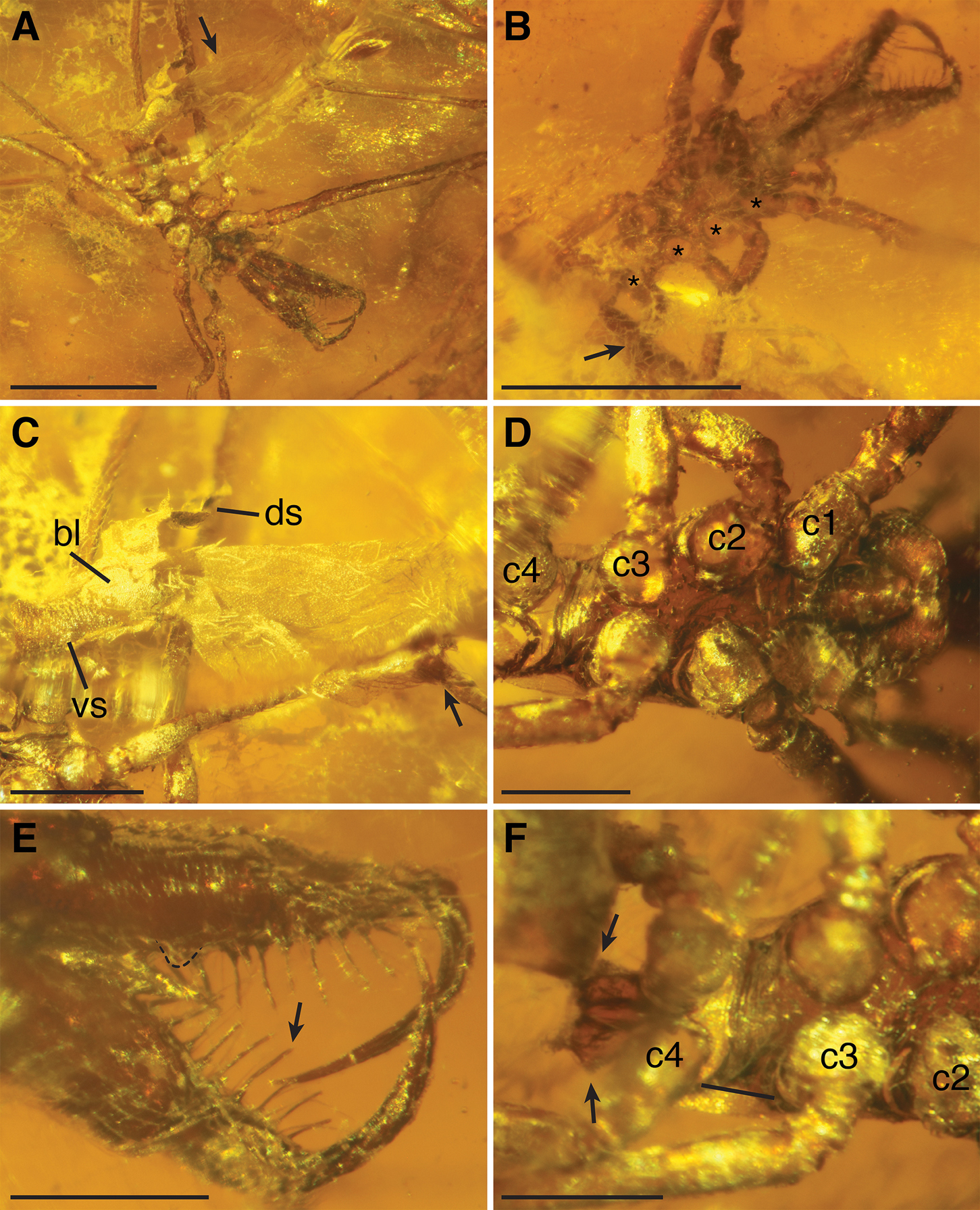
|
||
|
Images of Myrmecarchaea sp. (BSIP 41985) from Cambay amber A exuvium, ventral; arrow pointing to dorsal of abdomen B cephalothorax, dorsal; asterisks denote the coxal openings on the right side where the legs were pulled out of the ventral portion of the exuvium; arrow pointing to some silk threads that is part of a mesh that covers the dorsum of the exuvium C abdomen, lateral; arrow pointing at spinnerets; ‘ds’ showing the anterior dorsal abdominal sclerite, which is folded back as part of the molting process when the spider freed its body from the exuvium; ‘bl’ marking the booklung cover that is attached to the anterior ventral abdominal sclerite (labeled ‘vs’) D anterior portion of cephalothorax, ventral; for reference, the coxae on the right side are numbered and labeled (c = coxa) E distal portion of chelicerae, posterior; dashed line outlines the cheliceral gland mound on the right chelicera; arrow points to one peg tooth F posterior portion of cephalothorax, ventral; for reference, the coxae on the left side are numbered and labeled (c = coxa); arrows show the lateral spurs on the pedicel; black line shows the diastema between coxa III and coxa IV. Scale bars: 1 mm (A, B); 0.25 mm (C–F). |